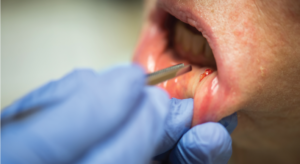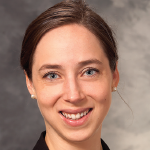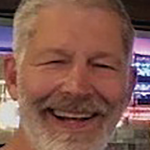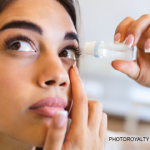
Clint Thayer
Labial salivary gland biopsy (i.e., lip biopsy) is a useful tool to help diagnose Sjögren’s syndrome in suspected patients, but most rheumatologists are not trained to perform the minimally invasive procedure. A new, 40-minute training video and slide presentation with step-by-step instructions may help them fill that critical skill gap. Two rheumatologists collaborated to create the video, which they are making freely available via YouTube.
“Trying to establish a diagnosis of Sjögren’s [syndrome] can be really challenging. … In many situations, a lip biopsy is recommended,” says Sara McCoy, MD, MS, assistant professor of medicine and director of the University of Wisconsin Health Sjögren’s Syndrome Clinic, Madison. She and Robert W. Ike, MD, associate professor emeritus of internal medicine at the University of Michigan in Ann Arbor, created this video based on a training workshop on labial gland biopsy which they led together at the 2019 ACR/ARP Annual Meeting.
Delayed Diagnosis
Many patients with suspected Sjögren’s syndrome who don’t have access to large medical centers face long delays in getting this biopsy because rheumatologists must often refer patients to an otolaryngologist for the biopsy, and then a trained pathologist must be available to interpret results, says Dr. McCoy.
“So there are two weak links in the chain.” To speed up the process, she says, “We can address a major one, which is having a rheumatologist do the biopsy bedside. It’s a simple procedure, minimally invasive and something we can accomplish on our own. This makes it better for the patient, better for the provider.”
There are no ACR-approved diagnostic criteria for Sjögren’s syndrome. Thus, many rheumatologists use the 2016 ACR/EULAR Classification Criteria to help make clinical diagnoses by using the results of five different tests, such as serological tests for anti-Ro antibodies, to rule out other causes for a patient’s symptoms.1 (Note: Classification criteria are designed to identify patients for inclusion in clinical trials and research studies and, thus, create a more uniform group of patients. They are not intended to be used for diagnostic purposes.)
In a weighted score in which four or more points are required to classify a patient with Sjögren’s syndrome, a positive labial salivary gland biopsy is worth three points, highlighting the value of this procedure for diagnosis.
Rheumatologists who conduct Sjögren’s syndrome research and diagnose patients in clinic say video-based procedure training is welcome, especially because in-person learning has mostly halted due to COVID-19. Free video training on performing a lip biopsy would be useful for community providers, agrees Jason E. Liebowitz, MD, who practices at Morristown Medical Center in Rockaway, N.J.
“Labial [salivary gland] biopsy can provide data to establish a Sjögren’s syndrome diagnosis, particularly in patients with subjective symptoms and signs, but negative or equivocal antibody studies. When read by an experienced pathologist, the objective data provided by a biopsy can be of great help. The biopsy itself has minimal risks, but the difficulty is finding a physician who is willing and able to perform this biopsy correctly,” such as an otolaryngologist, Dr. Liebowitz says. “A video would be very helpful for learning the proper technique and allowing for remote education, especially during the pandemic.”
“Labial [salivary gland] biopsy is a useful tool for diagnosis of Sjögren’s syndrome in patients who have clinical symptoms concerning for this condition but negative serology, which is not uncommon,” says Alireza Meysami, MD, CPE, RhMSUS, head of the Division of Rheumatology at Henry Ford Health System and associate professor of medicine, Wayne State University School of Medicine, Detroit.
‘Labial biopsy is a useful tool for diagnosis of Sjögren’s syndrome in patients who have clinical symptoms concerning for this condition but negative serology, which is not uncommon at all.’ —Dr. Meysami
Challenges

Dr. McCoy
“The main challenge is that lip biopsy is a skill, and as is true for any trade, unless a physician does it on regular basis, they might lose the expertise to perform this procedure,” Dr. Meysami notes. “Sjögren’s [syndrome] is a rare disease, and it might be a challenge for rheumatologists to keep up with this skill.”
According to Dr. Meysami, other barriers that may prevent rheumatologists from getting enough experience to perform lip biopsies include the lack of ACR-approved diagnostic criteria, which limits insurance reimbursement for the test and finding time to do it during very busy clinic hours when rheumatologists are overstretched. An educational video could serve as a convenient refresher on how to do the biopsy. “However, I believe a one-time, hands-on, in-person training session is necessary, [which should be] followed by watching the video on a regular basis,” he adds.
Designing a Video
Dr. McCoy describes her working relationship with Dr. Ike as a “fun dynamic” that began when she was a rheumatology fellow training with him in Ann Arbor. Dr. Ike held weekly procedures clinics on joint injections, ultrasound-guided techniques and labial salivary gland and muscle biopsies that she attended.

Dr. Ike
“In December 2014, I had a cycling accident in Chile that left me with only one working arm for a time,” Dr. Ike says. “Sara stepped up and said, ‘I’ll do your procedures for you. You just supervise me and teach me how.’ Then, for a year, Sara worked with me to demonstrate all of these procedures.
“Bedside procedures are not only valuable in that you are doing something for your patient, but it focuses you on the situation as you’re diving into the procedure. Salivary gland biopsy is an easily mastered skill and very valuable,” he says. “This is an incisional biopsy where we open an area inside the mouth and draw the knife blade over that, and the glands just pop out. You pick them out with a pointy forceps and put a stitch in to close the incision, and that’s that.”
Drs. Ike and McCoy wanted the new video voice-over to sound collaborative, similar to their original workshop, says Dr. McCoy. “This is a discussion-based presentation, with some questions and answers, and more than just teaching with a PowerPoint. That’s difficult to do because we don’t live by each other now. This was just made with love and time,” she says.
Reaching Trainees
The video features tight close-ups on a human volunteer. Each step was filmed by a University of Wisconsin medical school videographer, who also took still photos for the instruction slides.
“We are tapping into the mindset of today’s rheumatology trainees, who would much rather see a video than read a paper or a book,” says Dr. Ike.
“This version is geared toward providers, mainly because of the slides with instructions,” notes Dr. McCoy. “But in the future, we could create a shortened patient version as well.”
Dr. McCoy shows patients some biopsy video before their procedure appointment to explain what will happen and ease their fears about it. Many tell her they have seen images of older, more invasive wedge resection biopsies online.
“I think a shorter version of our new video could reassure them. Patients can come in pretty intimidated and scared about the biopsy, and they leave thinking it wasn’t as bad as they thought it would be,” she says.
Susan Bernstein is a freelance journalist based in Atlanta.
Reference
- Shiboski CH, Shiboski SC, Seror R, et al. 2016 American College of Rheumatology/European League Against Rheumatism classification for primary Sjögren’s syndrome: A consensus and data-driven methodology involving three international patient cohorts. Arthritis Rheumatol. 2017 Jan;69(1):35–45.


